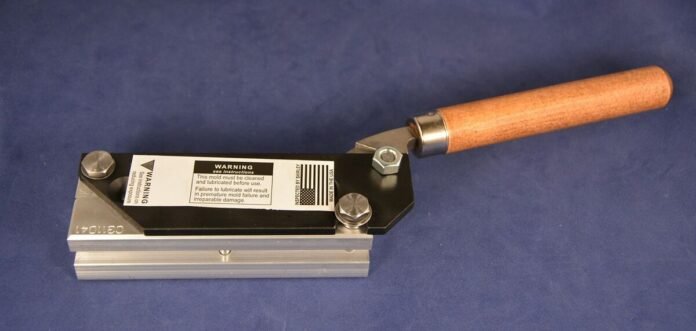The C312-155-2R 6 cavity mold load data is a popular tool used in bullet casting, particularly by enthusiasts and professionals who seek high precision in crafting projectiles. This mold design plays a crucial role in determining the quality, consistency, and performance of bullets. However, to fully understand its capabilities and maximize its potential, one must understand the load data associated with it. Load data refers to the specific bullet weight, powder type, charge weight, and velocity that work optimally with a given mold. In this article, we will explore the intricacies of the C312-155-2R 6 cavity mold load data, the factors that influence load data, and the best practices for using this mold safely and effectively.
1. What is the C312-155-2R 6 cavity mold load data?
The C312-155-2R 6 cavity mold load data is a high-quality bullet mold designed for casting six projectiles at a time. The number “312” refers to the diameter of the bullet produced, which is 0.312 inches. The number “155” represents the bullet weight, which is 155 grains, and “2R” refers to the round-nose shape (a 2-radius ogive). This mold is typically made from durable materials like aluminum or steel, ensuring longevity and the ability to produce consistent bullets over time.
The 6 cavity design means that it can cast multiple bullets simultaneously, making it a time-efficient option for bullet casters who need to produce a significant number of projectiles.
2. Load Data and Its Importance in Bullet Casting
Load data is one of the most critical factors in bullet casting. It refers to the combination of specific elements such as the type of bullet, powder charge, and primer used in a cartridge, which ultimately affects how the bullet will behave when fired. Accurate load data is essential to ensure:
- Safety: Using incorrect load data can result in over-pressurizing the cartridge, which may cause the gun to malfunction or even explode.
- Performance: The right load data ensures that the bullet reaches its optimal velocity and accuracy.
- Consistency: Reliable load data leads to uniform bullet performance, which is crucial in precision shooting.
When casting bullets using the C312-155-2R 6 cavity mold load data, it is vital to use the correct load data specific to the bullet design, firearm type, and intended purpose.
3. Factors That Affect Load Data
Several factors must be considered when determining the load data for bullets cast using the C312-155-2R 6 cavity mold. These factors include:
a. Bullet Weight
The weight of the bullet is one of the most important factors in determining load data. The C312-155-2R 6 cavity mold load data produces bullets weighing around 155 grains, a medium weight often used for cartridges like the 7.62x39mm or similar. Load data will need to account for this weight, ensuring that the powder charge provides sufficient energy for proper performance without creating excessive pressure.
b. Bullet Alloy Composition
The type of alloy used in casting bullets also affects load data. Bullets made from different lead alloys (e.g., pure lead, linotype, or wheel weights) have varying levels of hardness, which influence how the bullet interacts with the barrel and how much pressure is needed for optimal performance.
- Softer alloys may require a lighter powder charge to prevent barrel leading.
- Harder alloys can handle higher velocities and may require a heavier charge.
c. Powder Type
The choice of powder is another critical component of load data. Different powders burn at different rates, and this will directly affect the pressure and velocity of the bullet. For the C312-155-2R mold, slower-burning powders may be ideal for producing steady velocities, while faster-burning powders might create higher pressures and velocities more quickly.
- Smokeless powders such as IMR 4895 or H335 are common choices for bullets in the 155-grain range.
- Black powder substitutes may be used, though they typically require specific load data adjustments.
d. Firearm Chambering and Barrel Length
The chamber dimensions and barrel length of the firearm being used are key factors in determining load data. A longer barrel allows for more complete powder burn and higher velocities, while shorter barrels may require reduced charges to prevent excessive pressure.
e. Primers
The type of primer used can influence the ignition and pressure of the powder charge. Different powders may require specific primers, such as standard or magnum primers, to ensure reliable ignition and optimal performance.
4. Recommended C312-155-2R 6 cavity mold load data
The C312-155-2R 6 cavity mold load data is often used for cartridges like the 7.62x39mm or other calibers that require bullets of similar diameter and weight. Below is a general guideline for load data with this mold. Keep in mind that this information should be cross-checked with reputable reloading manuals or manufacturers’ websites for safety and accuracy.
a. For 7.62x39mm:
- Bullet Weight: 155 grains (cast using C312-155-2R mold)
- Powder: IMR 4198 or H335
- Starting Charge: 23.0 grains (for IMR 4198)
- Maximum Charge: 25.0 grains (for IMR 4198)
- Expected Velocity: 1800-2000 feet per second (fps)
- Primer: CCI 200 or similar
b. For .303 British:
- Bullet Weight: 155 grains
- Powder: IMR 4895
- Starting Charge: 29.0 grains
- Maximum Charge: 32.0 grains
- Expected Velocity: 1900-2100 fps
- Primer: Winchester WLR
These are starting points, and it is important to work up loads carefully, checking for signs of excessive pressure (flattened primers, sticky bolt, etc.) and adjusting as necessary.
5. Bullet Casting Best Practices for the C312-155-2R 6 cavity mold load data
To get the best results when using the C312-155-2R 6 cavity mold load data, follow these best practices:
a. Preheating the Mold
Before pouring molten lead into the mold, it’s essential to preheat it to the proper casting temperature. Preheating prevents the bullets from coming out with imperfections such as wrinkles or incomplete fills. A common method is to place the mold on top of a lead pot for a few minutes to bring it up to temperature.
b. Consistent Lead Alloy Temperature
Maintaining a consistent temperature for the lead alloy is critical for producing uniform bullets. If the alloy temperature fluctuates, bullet weight and diameter can vary, leading to inconsistencies in performance. Most casters aim for a temperature of around 700-750°F for typical lead alloys.
c. Sprue Cutting
After pouring the molten lead, a sprue forms on top of the mold. Once the lead solidifies, it’s essential to cut the sprue with the mold’s cutter. This step ensures the base of the bullet is flat, which is crucial for accuracy.
d. Lubrication and Sizing
Once the bullets are cast, they need to be properly sized to fit the firearm’s bore. Overly large bullets can increase pressure, while undersized bullets can cause gas blow-by, leading to inaccuracy. Bullets from the C312-155-2R 6 cavity mold load data should be sized to around 0.312 inches, but sizing may vary slightly depending on your firearm.
Lubricating the bullets with an appropriate bullet lube is essential to prevent leading in the barrel and ensure smooth operation.
6. Safety Considerations in Reloading and Casting
Reloading and bullet casting involve handling molten lead and combustible materials, so safety precautions are a must:
- Wear protective gear such as gloves, eye protection, and a long-sleeved shirt.
- Work in a well-ventilated area to avoid lead exposure.
- Follow all manufacturer’s recommendations for powder charges, primers, and components.
- Start with reduced loads and gradually increase, watching for signs of overpressure.
7. Troubleshooting Common Issues
a. Inconsistent Bullet Weight
If your bullets are not coming out with consistent weights, check your lead alloy temperature and ensure the mold is fully preheated. Inconsistent alloy temperature can cause incomplete fills or air pockets in the bullets.
b. Wrinkled Bullets
Wrinkles in bullets are typically caused by a mold that’s too cold or contaminated with oil. Ensure your mold is clean and properly preheated before casting.
c. Excessive Leading in the Barrel
Excessive leading is often the result of improper bullet fit or an inadequate lube. Make sure your bullets are sized correctly and use a good-quality bullet lube to minimize leading.
Conclusion
The C312-155-2R 6 cavity mold load data is a reliable tool for casting precision bullets, but its effectiveness depends on understanding and applying the correct load data. By paying attention to factors like bullet weight, alloy composition, powder type, and firearm chambering, reloaders can optimize performance and ensure safety. Always consult reliable sources for load data and follow best practices to achieve consistent and accurate results with your bullet casting endeavors.


